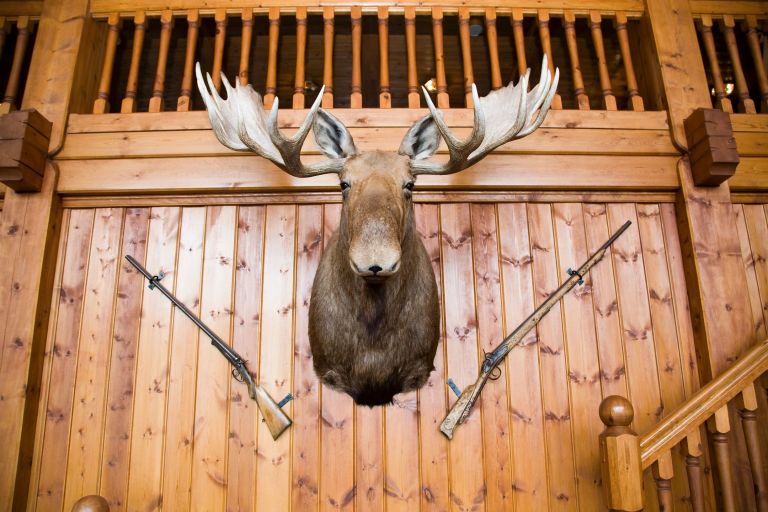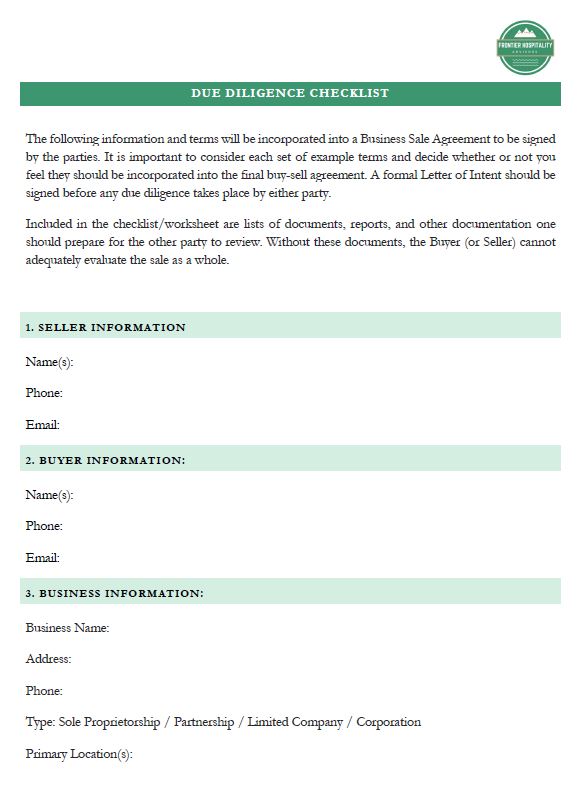The Return of the Fishing & Hunting Lodge and Resort industry
COVID-19 and the resulting government intervention hit the Canadian fishing & hunting lodge and resort industry first and hardest.
Lodge and resort businesses help Canada attract incredibly lucrative international travellers and the current border closures (with no known opening date) are decimating this industry.
International visitors are incredibly valuable to Canada as they stay longer and spend significantly more per trip than domestic travellers.
An over-reliance on the domestic market is a dangerous and less lucrative position for the country and will lead to a travel deficit (the difference between spending by Canadians abroad and spending by foreigners in Canada) that will never be recovered from if more government support isn’t provided.
Prior to COVID-19, Canada’s travel deficit was the country’s second highest deficit after manufacturing. The international tourism sector is intensely competitive and these lodges and resorts were helping Canada compete for these valuable dollars.
Even though tourism is the largest service export in our country (its worth tens of billions a year in export revenue), direct aid to this industry from the Government nor a timely border opening are certain. BUT as sure as a bear shits in the woods, Canada’s fishing & hunting lodge and resort industry will return like it has done so many times before.
The Past 20 Years Have Seen Canadian Lodge and Resort Businesses Persevere Through Some Major Obstacles
The Dot Com Bubble and Change in Travel Patterns Post 9/11 – 2001-02
In 2001-02 the industry was on the receiving end of a one-two punch — the threat of terrorism and the threat of recession. In 2001, there was a huge drop-off in tourists after the events of 9/11 as people didn’t want to fly. The other major event at that time was the state of the U.S. economy after the Dot Com Bubble burst. People were afraid of being laid off, so the last thing on their priority list was to take their annual outdoors getaway.
Right after 9/11, the Canadian Tourism Commission (now Destination Canada), asked for additional funds from the federal government to put into a marketing campaign. The campaign targeted Canadians (encouraging them to stay in their own country) and Americans in border states (encouraging them to drive to Canada, as opposed to long-haul flying customers that they traditionally focused on.)
The Canadian Tourism Commission determined post 9/11 that people still wanted to travel, but a large part of the population didn’t want to fly or be too far from home. It took four years for the United States to return to pre-September 11, 2001 flight levels.
The Canadian Tourism Commission’s marketing campaign was successful and helped mitigate the damage of these two major events. In the first six months of 2002, auto travel was up 7% while airline travel was down 11%.
When the borders are reopened to US guests (and the mandatory quarantine is removed), the older demographic that are the typical international tourists to Canadian lodges and resorts will still likely be hesitant to fly. It is good news to know that historically a well targeted marketing campaign at US border states encouraging them to drive has been effective in the past.
SARS - 2003
Back in March 2003 the Ontario Premier declared SARS a provincial emergency. SARS infected 8,000+ people worldwide, killing close to 800, according to the World Health Organization. SARS effect on the Canadian Tourism industry was mostly concentrated to Toronto/Ontario.
In the case of SARS, it was not as deadly or contagious as COVID-19 and, importantly, there was a vaccine. As soon as SARS was defeated, people felt safe to travel again (another positive).
The challenge of SARS negative impact on Ontario as a travel destination was confronted by a media strategy of creating stories highlighting attractive travel packages. In April 2003, the Ontario Government announced the creation of a $128-Million two year Tourism Recovery Program (TRP) to respond to the negative impact of SARS on Ontario’s tourism industry and to rebuild global confidence in Toronto and Ontario as a world-class destination.
All components of the Tourism Recovery Program were measured for effectiveness via an independent analysis. It was determined that the program prompted an additional 3.6 million tourism visits to Ontario and generated additional tourism spending of $687 million.
Government support through the COVID-19 pandemic likely won’t be as direct as owners would like. I expect any additional support provided to this sector will be a similar tourism recovery program at a much larger scale with many regional tourism organizations also implementing similar programs.
Newfoundland, Saskatchewan and the Northwest Territories have already implemented programs to provide a boost.
CAD Vs USD Reached Parity – 2007
In September 2007, the Canadian dollar reached parity with the US dollar for the first time in close to 31 years driven in part by record high prices for oil and other commodities.
The decline in numbers of foreign visitors to Canada, plus Canadians’ increasing travel outside the country, added up to a record high international travel deficit of $10.0 billion.
With the loonie virtually at parity with the U.S. dollar, Canadian tourism operators were calling on the federal government to help them offset what was already proving to be another big drop in tourism. No support was provided.
The Global Economic Crisis – 2008-09
Before COVID-19, the industry’s biggest test of resilience was the 2008-09 global financial crisis. The vast majority of lodges and resorts passed, but this time period did seem some permanent closures.
In the immediate aftermath of the crisis, reliable repeat guests were forced to pull back on their discretionary spending and cancelled their annual vacations. Businesses also tightened their belts and cut corporate travel expense accounts.
After the economic crisis, lodge and resort guests became more price sensitive. With the downturn of the economy and the resulting fewer American guests, lodges and resorts had to keep their prices in line in order to remain competitive.
Many fishing and hunting lodges reacted to the economic crisis by attempting to diversity their product to fit the mainstream outdoor adventure or eco-tourism market. Owners stated that this was a difficult fit and they could not make it work. Reasons cited included: the difficulty in mixing the consumptive market with eco-tourists, not enough available capital to invest, and the challenges with offering product of this nature in their location.
Creating a Recovery Plan
There is no sugar coating the situation the resource based tourism industry is in. COVID-19 is the biggest thing the Canadian Lodge and resort industry has ever faced, especially for those lodges and resorts that rely upon international markets.
Hopefully the timeline of major events above serves as a reminder that this is a resilient industry and its participants will march on. As tiring as operating one of these businesses can be, the owners of lodges and resorts bought in because of their passion for the outdoors and hospitality. Where there’s passion, there’s creativity, and where there’s creativity, solutions are found.
One of the biggest advantages lodges and resorts have now is time. But they have to approach this opportunity as a new game. It’s critical that anyone who runs a resource based tourism business creates a recovery plan and does their best to understand how their key markets will react once things – and people – start moving again.
What tactics can these businesses embrace now to emerge strong this time?
- Dispose of any real estate assets and equipment that are not 100% essential and apply the resulting capital availability to improve the quality of your core assets.
- Focus on retaining your most valuable guests – provide them with frequent updates helping them maintain their connection with you.
- Setup your expenses to be as elastic as possible so that you can quickly respond to industry fluctuations. An elastic expense is one which will increase or decrease proportionally to changes in demand.
- Upskill yourself to better meet tomorrows demands. The first travellers back might skew younger. The risk of COVID-19 seems minimal for younger people, so millennials might be the first to return. Take this time to learn more about digital marketing and content creation to improve your marketing.
Working in concert, these actions can strengthen any lodge or resort. Oxford Economics estimates the global tourism industry will fully return to normal by 2023.
Regional tourism will be the first thing to come back, as frustrated travellers take baby steps and explore areas near home. That doesn’t help more remote lodges and resort but it might help the operations nearer to large city centres.
Luckily, Canada’s biggest customer (Americans) can drive to our country. So we have that advantage, along with the value of the dollar and the perception (and indeed the reality) that Canada is one of the safest countries in the world. So we have a lot going for us.
This article has been prepared by Frontier Hospitality Advisor for general information only. Frontier Hospitality Advisor makes no guarantees, representations or warranties of any kind, expressed or implied, regarding the information including, but not limited to, warranties of content, accuracy and reliability. Any interested party should undertake their own inquiries as to the accuracy of the information. Frontier Hospitality Advisor excludes unequivocally all inferred or implied terms, conditions and warranties arising out of this article and excludes all liability for loss and damages arising there from.


